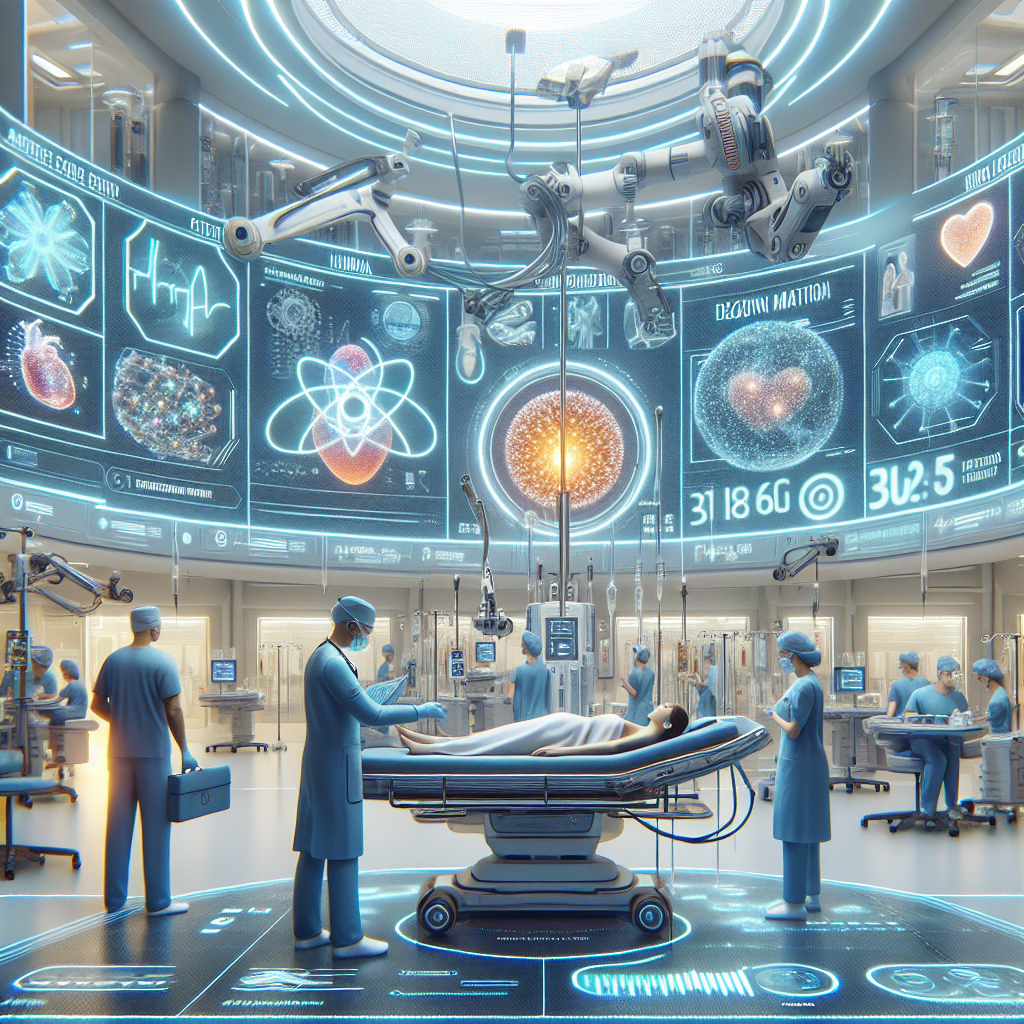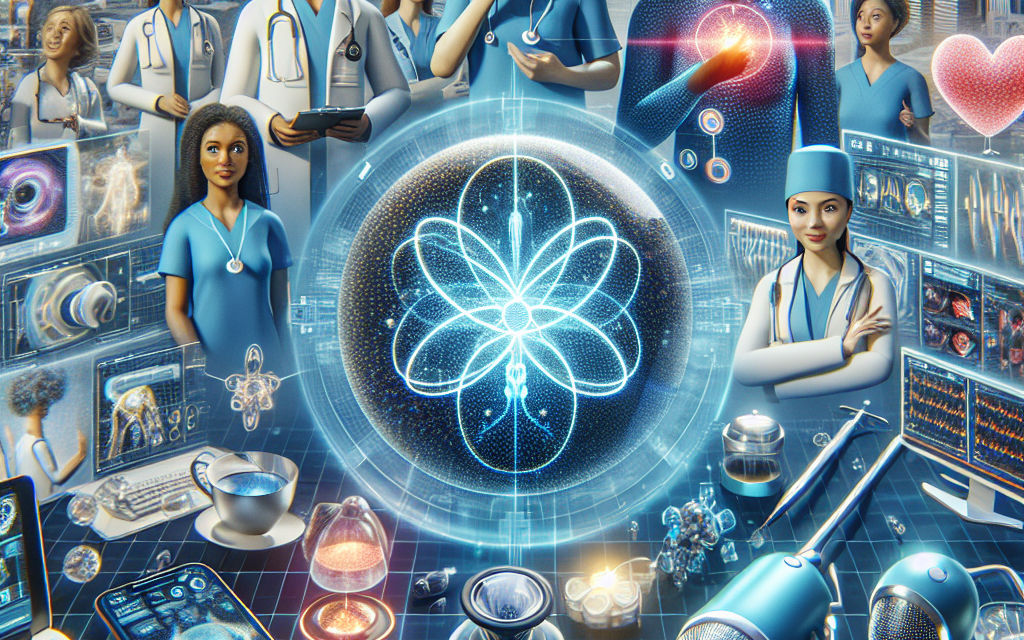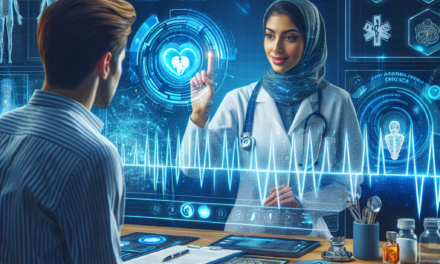Emerging Healthcare Technologies for 2025

The healthcare industry is on the brink of a technological revolution, with innovations poised to transform patient care, diagnostics, and treatment methodologies. As we approach 2025, several emerging technologies are set to redefine the landscape of healthcare, offering unprecedented opportunities for improving health outcomes and operational efficiencies. This article delves into five key areas where technology is making significant strides, providing a comprehensive overview of what the future holds for healthcare.
1. Artificial Intelligence and Machine Learning in Healthcare
Artificial Intelligence (AI) and Machine Learning (ML) are at the forefront of technological advancements in healthcare. These technologies are being integrated into various aspects of healthcare, from diagnostics to personalized medicine, offering the potential to revolutionize patient care.
1.1 AI in Diagnostics
AI’s ability to analyze vast amounts of data quickly and accurately makes it an invaluable tool in diagnostics. Machine learning algorithms can process medical images, such as X-rays and MRIs, with a level of precision that rivals human experts. For instance, a study published in Nature Medicine demonstrated that an AI system developed by Google Health could detect breast cancer in mammograms with greater accuracy than radiologists.
Moreover, AI is being used to predict disease outbreaks by analyzing patterns in data from various sources, including social media and healthcare records. This predictive capability can help healthcare providers prepare for and mitigate the impact of epidemics.
1.2 Personalized Medicine
AI and ML are also driving the shift towards personalized medicine, where treatments are tailored to individual patients based on their genetic makeup and other personal factors. By analyzing genetic data, AI can identify the most effective treatments for specific patients, reducing trial-and-error approaches and improving outcomes.
For example, IBM Watson for Oncology uses AI to provide oncologists with evidence-based treatment options tailored to individual patients. This approach not only enhances treatment efficacy but also reduces the risk of adverse effects.
1.3 AI in Drug Discovery
The drug discovery process is notoriously time-consuming and expensive. AI is streamlining this process by identifying potential drug candidates more quickly and accurately. By analyzing biological data, AI can predict how different compounds will interact with targets in the body, accelerating the development of new drugs.
Companies like Atomwise and BenevolentAI are leveraging AI to discover new drug candidates, significantly reducing the time and cost associated with traditional drug discovery methods.
1.4 AI in Patient Monitoring
AI-powered wearable devices are transforming patient monitoring by providing real-time data on vital signs and other health metrics. These devices can alert healthcare providers to potential issues before they become critical, enabling timely interventions.
For instance, the Apple Watch’s ECG feature can detect irregular heart rhythms, potentially identifying atrial fibrillation early and preventing strokes. Such innovations empower patients to take a more active role in managing their health.
1.5 Ethical Considerations and Challenges
While AI offers numerous benefits, it also raises ethical concerns, particularly regarding data privacy and algorithmic bias. Ensuring that AI systems are transparent and unbiased is crucial to maintaining trust in these technologies.
Healthcare providers and technology developers must work together to establish ethical guidelines and regulatory frameworks that protect patient data and ensure equitable access to AI-driven healthcare solutions.
2. Telemedicine and Remote Healthcare
The COVID-19 pandemic accelerated the adoption of telemedicine, highlighting its potential to provide accessible and convenient healthcare. As we move towards 2025, telemedicine is expected to become a permanent fixture in the healthcare landscape, offering numerous benefits to patients and providers alike.
2.1 Expanding Access to Care
Telemedicine breaks down geographical barriers, allowing patients in remote or underserved areas to access healthcare services. This is particularly beneficial for individuals with limited mobility or those living in rural areas where healthcare facilities are scarce.
For example, the Indian government launched the eSanjeevani platform, which provides teleconsultation services to millions of citizens, improving access to healthcare across the country.
2.2 Enhancing Patient Convenience
Telemedicine offers unparalleled convenience, enabling patients to consult with healthcare providers from the comfort of their homes. This reduces the need for travel and waiting times, making healthcare more accessible and efficient.
Patients can schedule virtual appointments at their convenience, receive prescriptions electronically, and access follow-up care without the need for in-person visits.
2.3 Cost-Effectiveness
Telemedicine can significantly reduce healthcare costs by minimizing the need for physical infrastructure and reducing hospital readmissions. By providing timely interventions and monitoring, telemedicine can prevent complications and improve health outcomes.
Healthcare providers can also optimize their resources by offering virtual consultations, reducing overhead costs associated with maintaining physical facilities.
2.4 Integration with Wearable Technology
The integration of telemedicine with wearable technology enhances remote patient monitoring, allowing healthcare providers to track patients’ health metrics in real-time. This data can be used to make informed decisions about patient care and provide personalized recommendations.
For instance, wearable devices can monitor chronic conditions such as diabetes or hypertension, alerting healthcare providers to any changes that may require intervention.
2.5 Challenges and Future Directions
Despite its benefits, telemedicine faces challenges, including regulatory hurdles, reimbursement issues, and concerns about data security. Ensuring that telemedicine services are secure and compliant with healthcare regulations is essential to their widespread adoption.
As technology continues to evolve, telemedicine is expected to become more sophisticated, incorporating AI and virtual reality to enhance patient interactions and improve diagnostic accuracy.
3. Genomics and Precision Medicine
Genomics and precision medicine are transforming the way we understand and treat diseases. By analyzing an individual’s genetic makeup, healthcare providers can develop targeted therapies that are more effective and have fewer side effects.
3.1 Understanding Genomics
Genomics is the study of an organism’s complete set of DNA, including all of its genes. Advances in genomic sequencing technologies have made it possible to analyze genetic data quickly and affordably, paving the way for personalized medicine.
By understanding the genetic basis of diseases, researchers can identify potential targets for new therapies and develop treatments that are tailored to individual patients.
3.2 Applications in Cancer Treatment
Precision medicine has made significant strides in cancer treatment, where therapies are tailored to the genetic profile of a patient’s tumor. This approach allows for more effective treatments with fewer side effects compared to traditional chemotherapy.
For example, targeted therapies such as Herceptin for HER2-positive breast cancer and Gleevec for chronic myeloid leukemia have revolutionized cancer treatment by targeting specific genetic mutations.
3.3 Pharmacogenomics
Pharmacogenomics is the study of how genes affect a person’s response to drugs. By understanding genetic variations that influence drug metabolism, healthcare providers can prescribe medications that are more effective and have fewer adverse effects.
This approach is particularly beneficial for patients with chronic conditions who require long-term medication management, as it allows for more precise dosing and reduces the risk of adverse reactions.
3.4 Ethical and Social Implications
The use of genomics in healthcare raises ethical and social concerns, particularly regarding privacy and access to genetic information. Ensuring that genetic data is protected and used responsibly is crucial to maintaining public trust in these technologies.
Additionally, there is a need to address disparities in access to genomic testing and precision medicine, ensuring that all patients can benefit from these advancements regardless of their socioeconomic status.
3.5 Future Prospects
As genomic technologies continue to advance, precision medicine is expected to become more widespread, offering new opportunities for disease prevention and treatment. The integration of AI and machine learning with genomics will further enhance our ability to analyze genetic data and develop targeted therapies.
In the future, we may see the development of personalized vaccines and gene therapies that can prevent or cure genetic diseases, revolutionizing the way we approach healthcare.
4. Robotics and Automation in Healthcare
Robotics and automation are playing an increasingly important role in healthcare, offering new ways to improve patient care and streamline operations. From surgical robots to automated pharmacy systems, these technologies are enhancing efficiency and precision in healthcare delivery.
4.1 Surgical Robotics
Surgical robots are transforming the field of surgery by providing surgeons with enhanced precision and control. These robots can perform minimally invasive procedures with greater accuracy, reducing recovery times and improving patient outcomes.
The da Vinci Surgical System is one of the most widely used surgical robots, allowing surgeons to perform complex procedures with small incisions, resulting in less pain and scarring for patients.
4.2 Robotic Rehabilitation
Robotic rehabilitation devices are helping patients recover from injuries and surgeries by providing targeted therapy and support. These devices can assist with physical therapy exercises, helping patients regain strength and mobility more quickly.
For example, the Lokomat robotic exoskeleton is used in rehabilitation centers to help patients with spinal cord injuries or stroke regain their ability to walk.
4.3 Automation in Pharmacy
Automation is streamlining pharmacy operations by reducing the risk of medication errors and improving efficiency. Automated dispensing systems can accurately fill prescriptions and manage inventory, freeing up pharmacists to focus on patient care.
These systems also enhance patient safety by ensuring that medications are dispensed accurately and reducing the risk of human error.
4.4 Robotic Assistance in Elderly Care
Robotic assistants are being developed to support elderly individuals in their daily activities, providing companionship and assistance with tasks such as medication management and mobility.
For instance, the Paro robotic seal is used in nursing homes to provide comfort and companionship to residents, reducing feelings of loneliness and improving mental well-being.
4.5 Challenges and Future Directions
While robotics and automation offer numerous benefits, they also present challenges, including high costs and the need for specialized training. Ensuring that healthcare providers are equipped to use these technologies effectively is crucial to their successful implementation.
As technology continues to advance, we can expect to see more sophisticated robotic systems that can perform a wider range of tasks, further enhancing the capabilities of healthcare providers and improving patient care.
5. Blockchain Technology in Healthcare
Blockchain technology, best known for its role in cryptocurrencies, is making inroads into healthcare, offering new ways to secure and manage patient data. By providing a decentralized and tamper-proof system for storing information, blockchain has the potential to enhance data security and interoperability in healthcare.
5.1 Securing Patient Data
Blockchain’s decentralized nature makes it an ideal solution for securing patient data, as it eliminates the risk of a single point of failure. By encrypting data and distributing it across a network of nodes, blockchain ensures that patient information is protected from unauthorized access and tampering.
This enhanced security is particularly important in an era where data breaches are becoming increasingly common, posing significant risks to patient privacy and trust.
5.2 Enhancing Interoperability
Interoperability is a major challenge in healthcare, with different systems often unable to communicate effectively. Blockchain can facilitate data sharing between healthcare providers by providing a standardized and secure platform for exchanging information.
This improved interoperability can enhance care coordination and reduce the risk of errors, ultimately leading to better patient outcomes.
5.3 Streamlining Clinical Trials
Blockchain can streamline the clinical trial process by providing a transparent and tamper-proof record of trial data. This can enhance the integrity of clinical trials by ensuring that data is accurate and verifiable, reducing the risk of fraud and errors.
Additionally, blockchain can improve patient recruitment and consent processes by providing a secure platform for managing patient information and ensuring that consent is obtained and recorded accurately.
5.4 Supply Chain Management
Blockchain can enhance supply chain management in healthcare by providing a transparent and traceable record of the movement of goods. This can help prevent counterfeit drugs from entering the supply chain and ensure that medications are stored and transported under the correct conditions.
By providing real-time visibility into the supply chain, blockchain can also improve inventory management and reduce waste, ultimately leading to cost savings for healthcare providers.
5.5 Challenges and Future Prospects
Despite its potential, blockchain faces challenges in healthcare, including scalability issues and the need for regulatory frameworks. Ensuring that blockchain systems can handle large volumes of data and comply with healthcare regulations is crucial to their successful implementation.
As technology continues to evolve, we can expect to see more widespread adoption of blockchain in healthcare, offering new opportunities for improving data security, interoperability, and efficiency.
Conclusion
The healthcare industry is on the cusp of a technological revolution, with emerging technologies poised to transform patient care and operational efficiencies. From AI and machine learning to telemedicine, genomics, robotics, and blockchain, these innovations offer unprecedented opportunities for improving health outcomes and reducing costs.
As we move towards 2025, it is crucial for healthcare providers, policymakers, and technology developers to work together to address the challenges and ethical considerations associated with these technologies. By doing so, we can ensure that these advancements are used responsibly and equitably, ultimately leading to a healthier and more efficient healthcare system.





